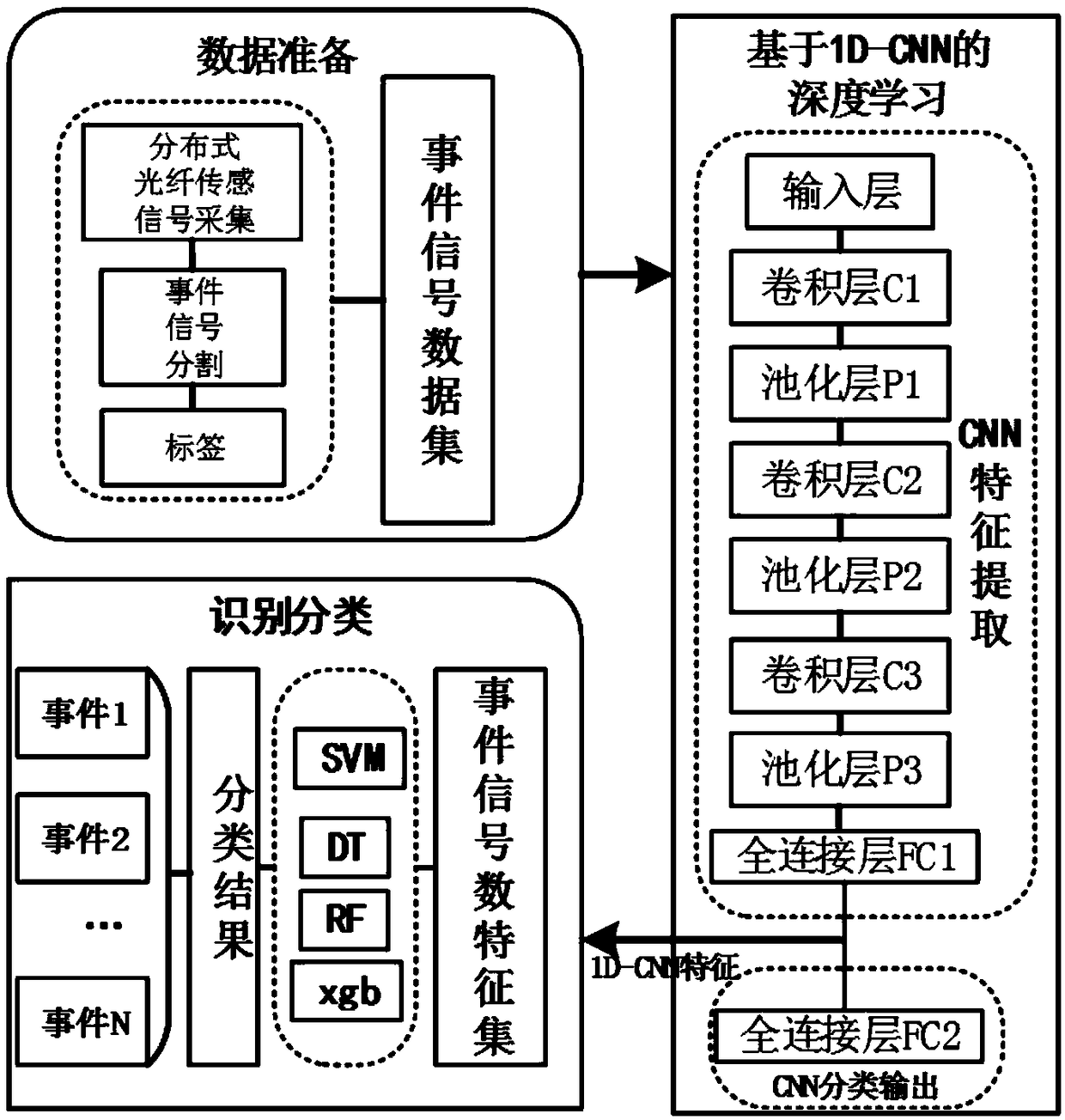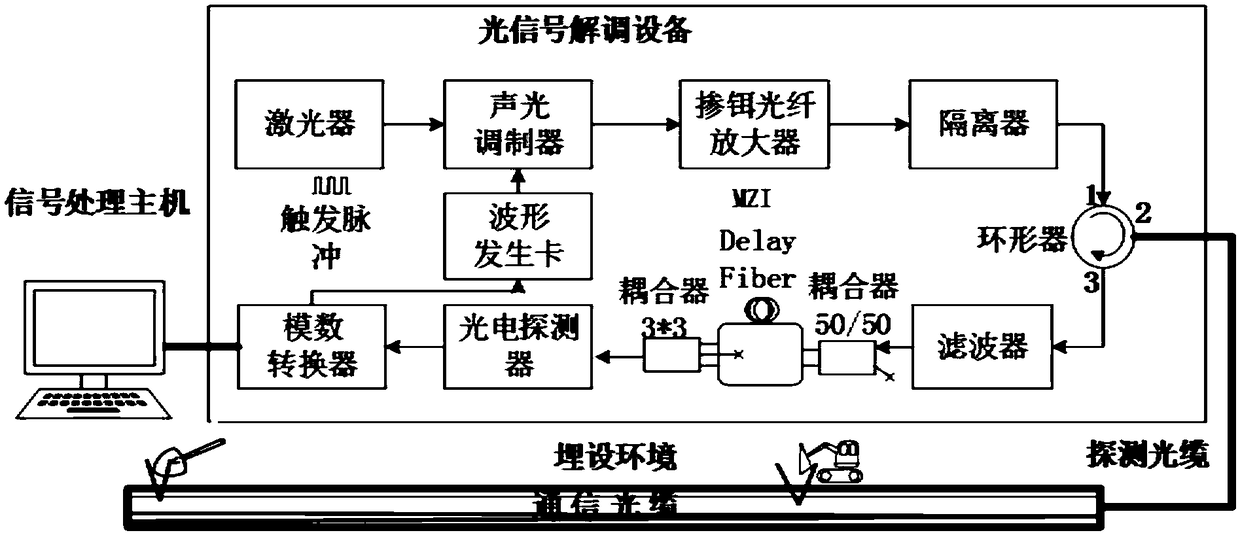1D-CNN based distributed optical fiber sensing signal feature learning and classification method
A 1D-CNN, distributed optical fiber technology, applied in the field of feature learning and classification of distributed optical fiber sensing signals based on 1D-CNN, can solve the problem of complex and changeable large-scale monitoring environments, poor environmental adaptability, and time-consuming feature resolution. and other problems, to achieve the effect of excellent recognition effect, high accuracy, and reduced computational complexity
- Summary
- Abstract
- Description
- Claims
- Application Information
AI Technical Summary
Problems solved by technology
Method used
Image
Examples
Embodiment 1
[0076] Taking the application of long-distance pipeline safety monitoring as an example, based on the one-dimensional convolutional neural network (1D-CNN) distributed optical fiber sound and vibration sensing signal feature learning and classification method, the entire signal processing process is as follows: figure 1 As shown, it is mainly divided into three parts:
[0077] The first part is data preparation. Using the distributed fiber optic sound and vibration sensing system hardware based on the phase-sensitive optical time domain reflectometer to collect the sound or vibration signals along the pipeline in the complex background environment of the actual application site (that is, the distributed fiber optic sensing signal), the data collected at each space point The pipeline event signal time series is divided by time period to construct a typical event signal data set.
[0078] In the second part, a one-dimensional convolutional neural network (1D-CNN) is constructed...
Embodiment 2
[0081] The system hardware used for signal acquisition in Embodiment 1 is a distributed optical fiber sound and vibration sensing system based on the phase-sensitive optical time-domain reflectometry (Φ-OTDR) technology of phase demodulation. The system structure and its working principle are as follows: figure 2 shown. The system hardware consists of three parts, detection optical cable, optical signal demodulation equipment, and signal processing host. Detection cables usually use ordinary single-mode communication fibers, which are usually buried along underground pipelines, transmission cables, and urban roads, and can also directly use the spare cores of communication cables laid along pipelines or roads. Optical signal demodulation equipment is the core of the system, and its internal components mainly include optical devices and electrical devices. A continuous coherent optical signal is generated by an ultra-narrow linewidth laser, which is modulated into an optical ...
Embodiment 3
[0086] The one-dimensional time series of each spatial point in the spatio-temporal response signal matrix accumulated in Embodiment 2 is divided into event signals along the time axis by column to construct a typical event signal data set raw_data. In the present invention, pipeline safety monitoring is taken as an example to construct a typical event signal data set raw_data related to pipeline safety. The specific operation process is as follows: For the signal time series of each spatial point, the event signal with a time length of L is sequentially intercepted, such as image 3 Shown in the rectangular box in the middle, as an event signal sample, denoted as X1 ,X 2 ...., etc., according to the type of event that actually occurred, label the event type respectively.
[0087] In the process of pipeline safety monitoring, typical event types usually include: stable environmental noise, human excavation, mechanical excavation, vehicle interference and factory interference ...
PUM
 Login to View More
Login to View More Abstract
Description
Claims
Application Information
 Login to View More
Login to View More - R&D Engineer
- R&D Manager
- IP Professional
- Industry Leading Data Capabilities
- Powerful AI technology
- Patent DNA Extraction
Browse by: Latest US Patents, China's latest patents, Technical Efficacy Thesaurus, Application Domain, Technology Topic, Popular Technical Reports.
© 2024 PatSnap. All rights reserved.Legal|Privacy policy|Modern Slavery Act Transparency Statement|Sitemap|About US| Contact US: help@patsnap.com










